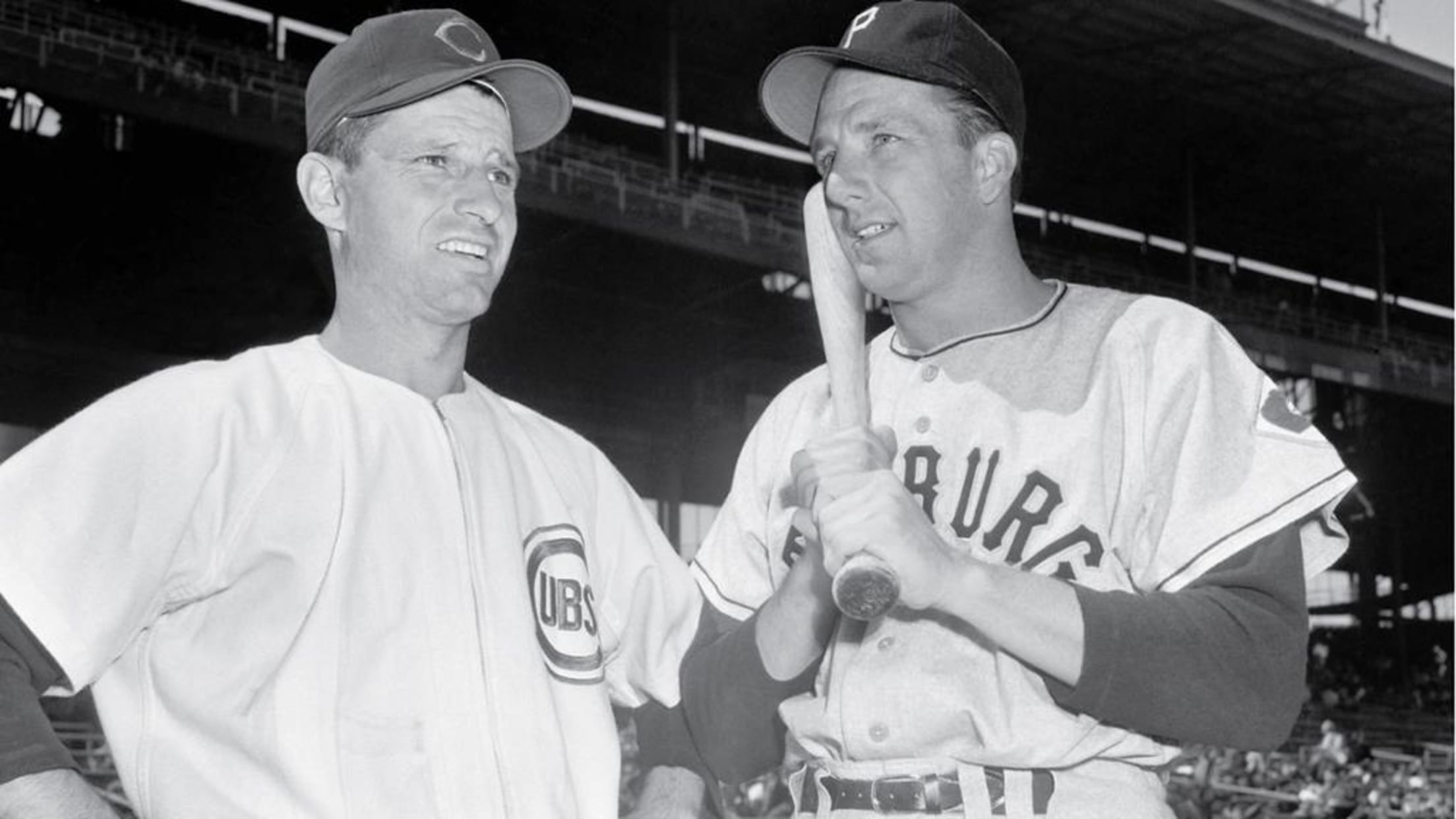RALPH KINER
"I Happened to Have that Kind of Swing"
By Abby Mendelson
June, 4, 1953, dawned hot and dry.
As temperatures climbed, Hall of Fame general manager Branch Rickey, moving the Pirates toward youth, traded future Hall of Famer Ralph Kiner, the only man to lead his league in home runs for seven consecutive seasons.
Some wept; others rejoiced. Kiner was a hero; Kiner was a bum.
Yet he was something else as well: the single greatest drawing card in Pirate history.
Crowds came to Forbes Field to wait for a home run then streamed out after his last at-bat. Outcome of the game? A Pirate loss, a Kiner blast.
Swinging against such sluggers as Johnny Mize, Stan Musial, Duke Snider, and Willie Mays, Kiner led the Senior Circuit from 1946-52.
Never a tape measure hitter, his homers were nevertheless high, towering shots that generally cleared, well, everything.
Born in New Mexico in 1922, he grew to be a powerful righthander. By age 11 he could a softball farther than anyone he knew. By 13 he was playing semi-pro ball. At 17 he faced future Hall of Famer Satchell Paige. Touched him up, too.
How did he do it?
"It certainly wasn't strength or bulk muscle," Kiner says. "I happened to have that kind of swing."
Although the Pirates signed Kiner out of high school in 1940, a couple of years in the minors and a hitch in the Navy delayed his arrival in Pittsburgh until 1946.
He hit only 23 round trippers, but that was good enough, as the 24-year-old became the first rookie in 40 years to lead the league.
In '47 the club did Kiner an enormous favor -- by acquiring future Hall of Famer Hank Greenberg. Greenberg, who had nearly topped Babe Ruth's then-record 60 by belting 58 homers, told Kiner to stand closer to the plate and drive outside pitches with power.
The pay-off was immediate, as Kiner graduated to the 50-homer club, belting 51 to tie Mize for the title.
The next year, 1948, he hit 40. In '49 he hit 54, second-highest in league history (to Hack Wilson's 56.)
In 1950 Kiner belted 47, in 1951 he hit 42. In '52, while the club finished at 41-112, the worst of this century, Mr. Slug took his seventh and final crown, sharing honors with Cub Hank Sauer, whacking 37.
It was a career of which legend -- and Hall of Fame plaques -- are made.
It is also the stuff of which attendance is made. Although during the Kiner years the Pirates assembled the most dreadful teams in club history, the fans kept pouring into Forbes Field. For the first time, in 1947, the Pirates broke a million, double the previous year, the first of four straight million-plus seasons.
It was not to last.
Branch Rickey came in 1951 with a five-year plan to bring a pennant, including bringing up kids while trading high-priced veterans, Kiner included.
When Kiner left so did the fans.
Attendance fell to a half-million in '53 and stayed below that figure for the next two years.
After Pittsburgh, Kiner spent a year-and-a-half with the Cubs, and a season with the Indians, his homer total dwindling to 18 until a back injury shelved him.
10 years, 369 home runs (301 as a Pirate), one homer for every 14.1 at-bats, second only to Babe Ruth (one in every 11.8). In 1975 he was elected into the Hall of Fame.